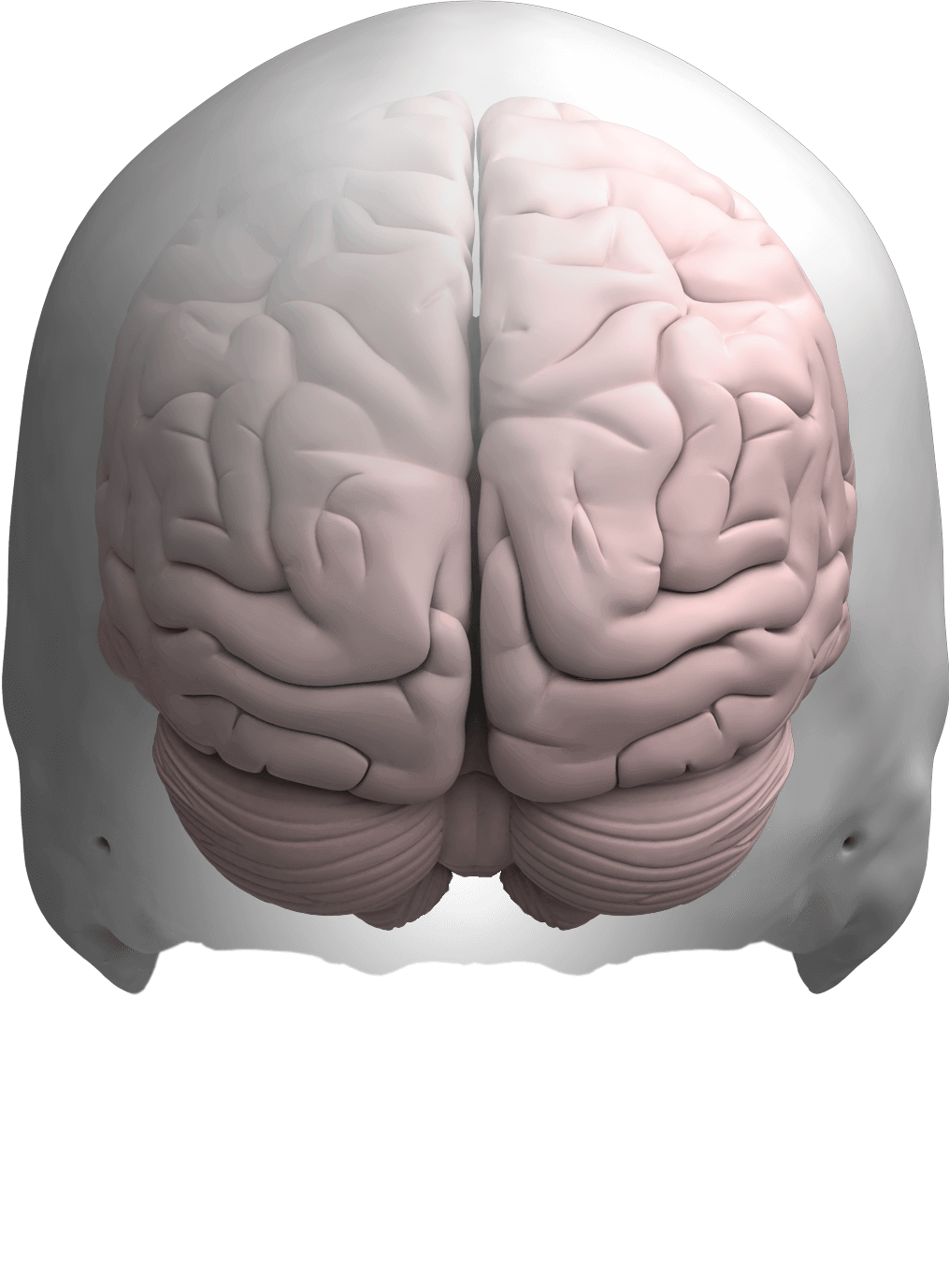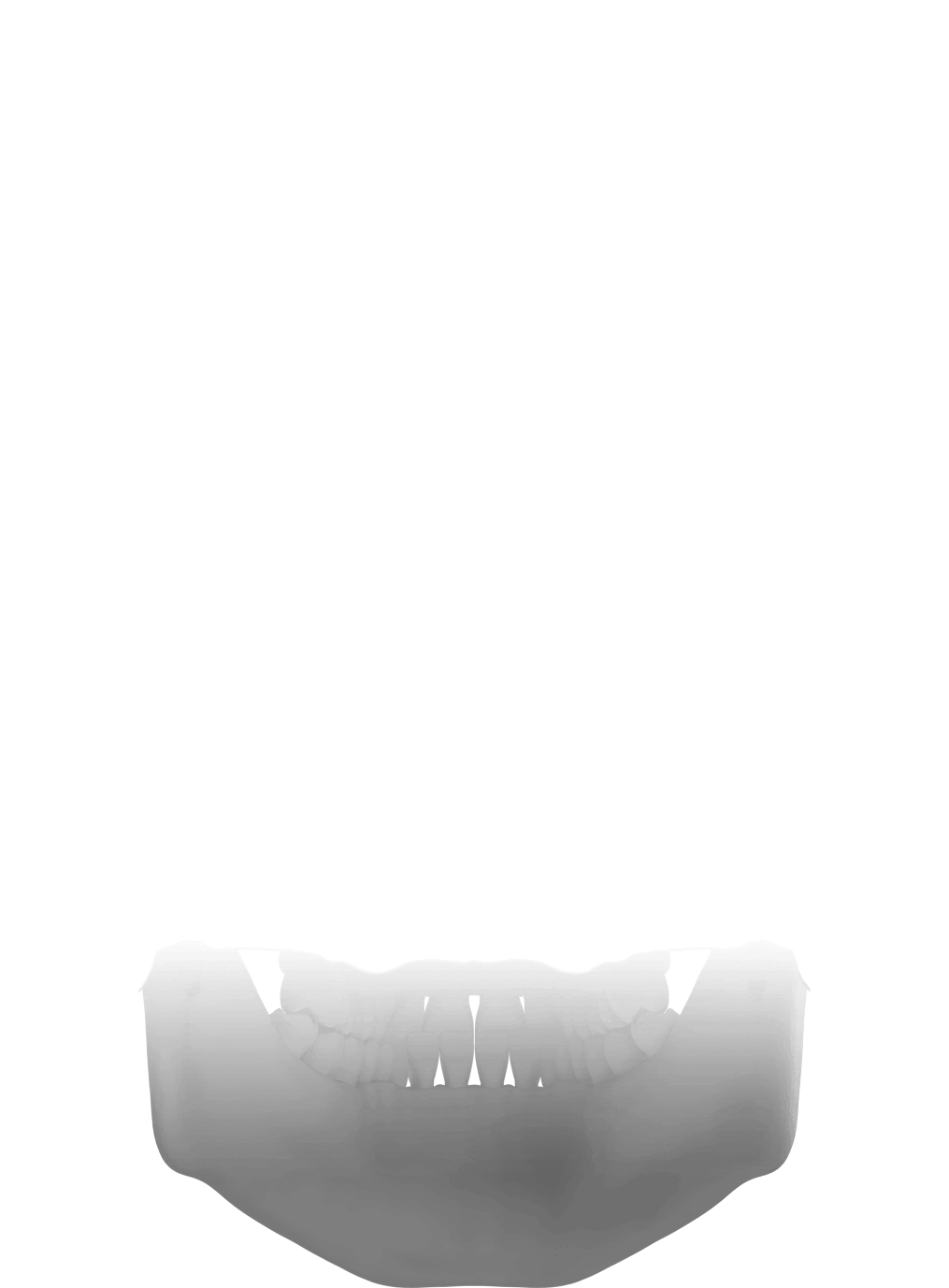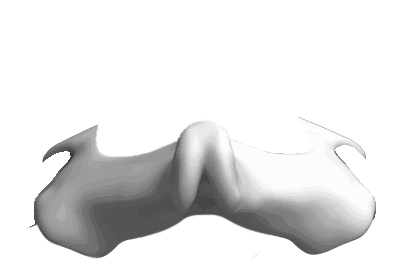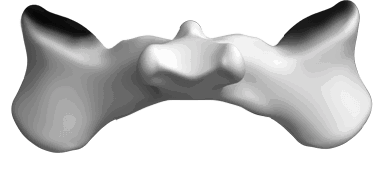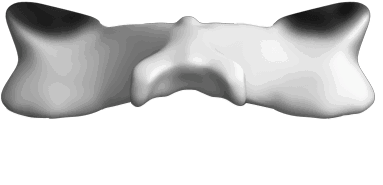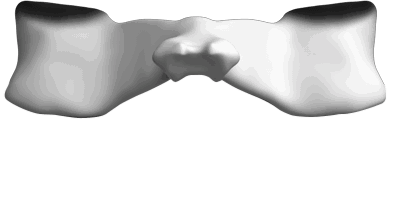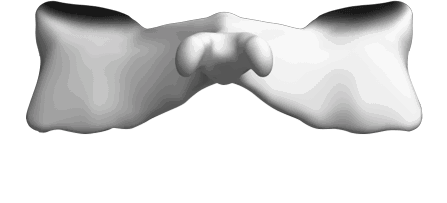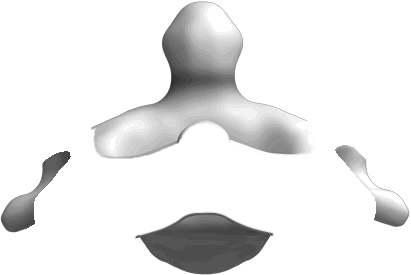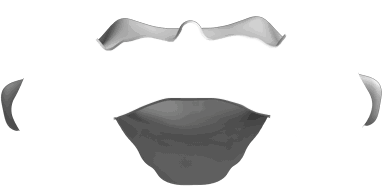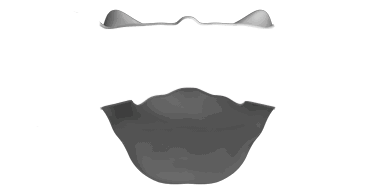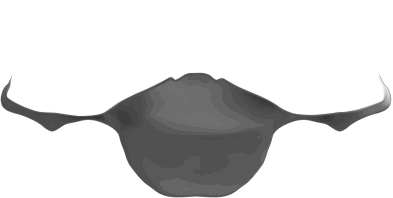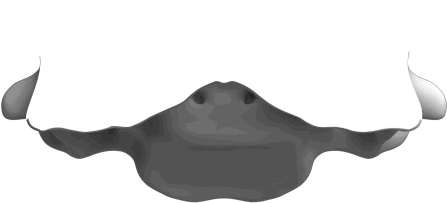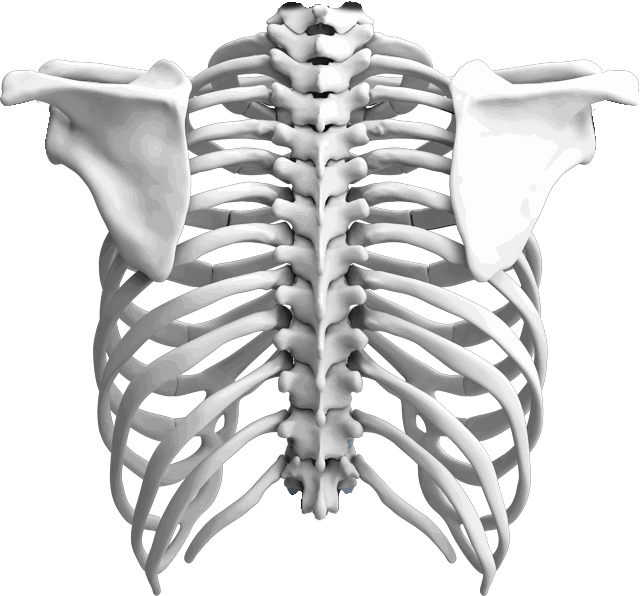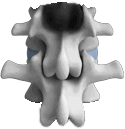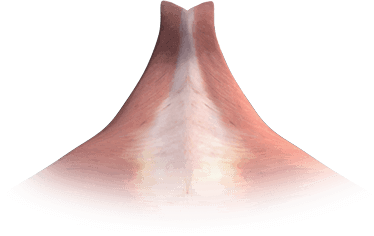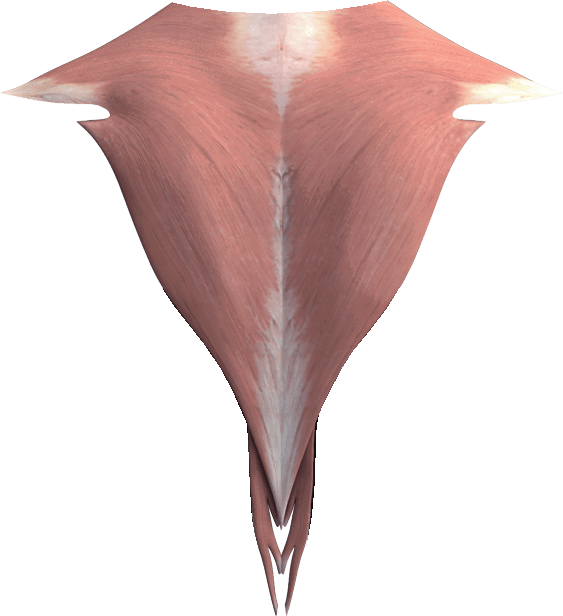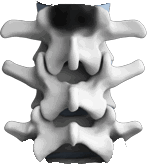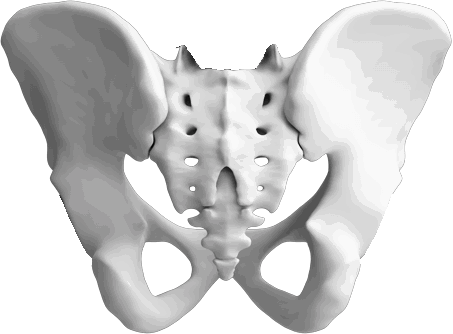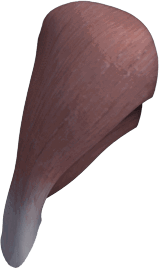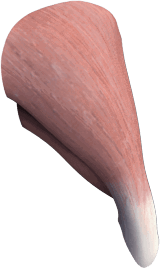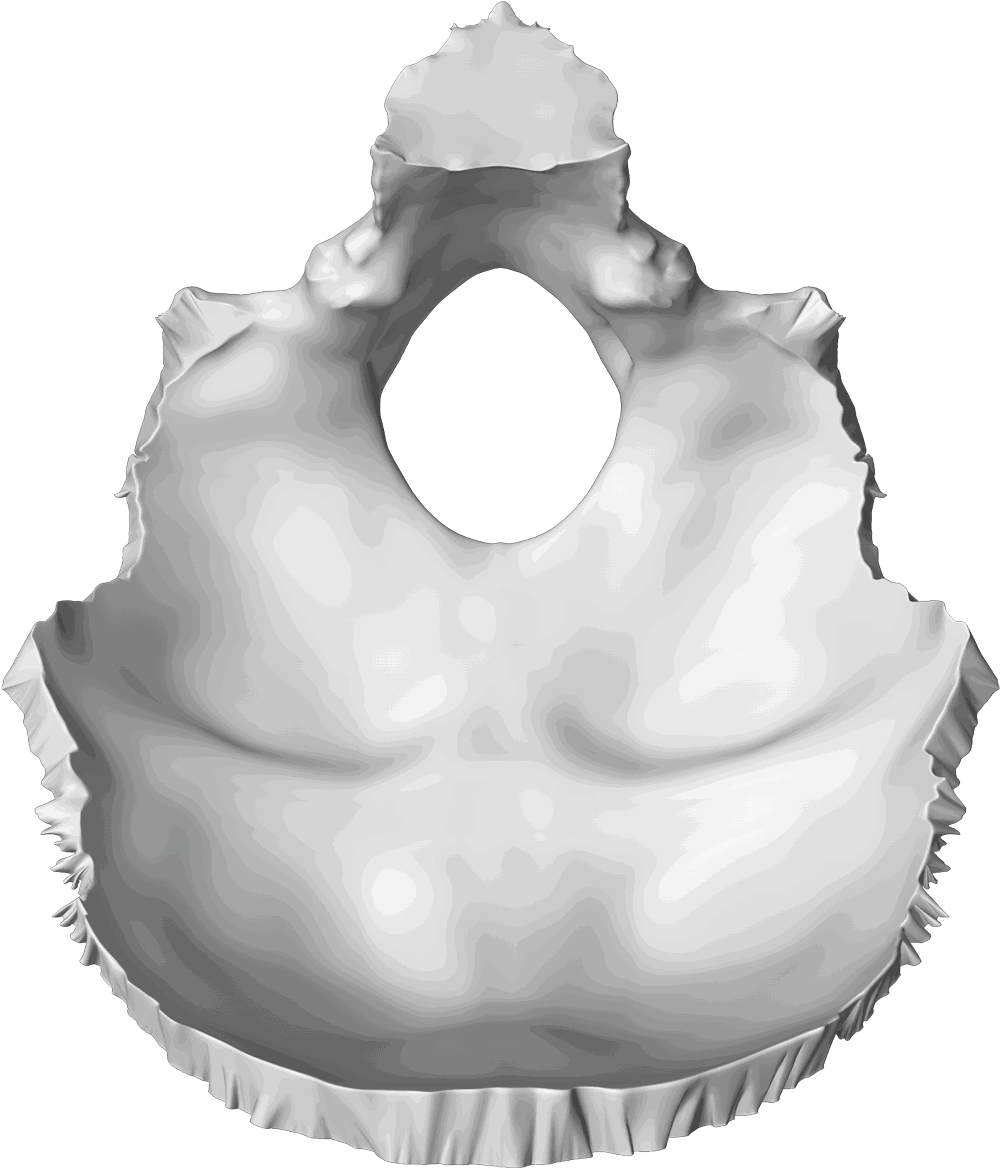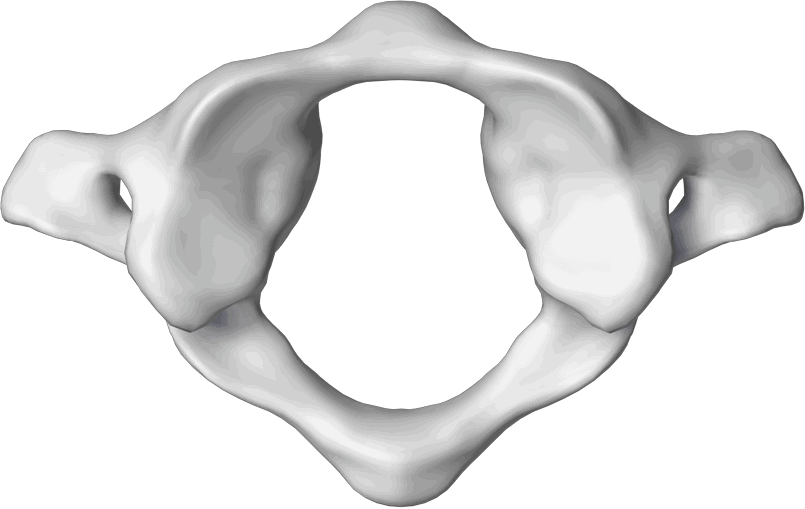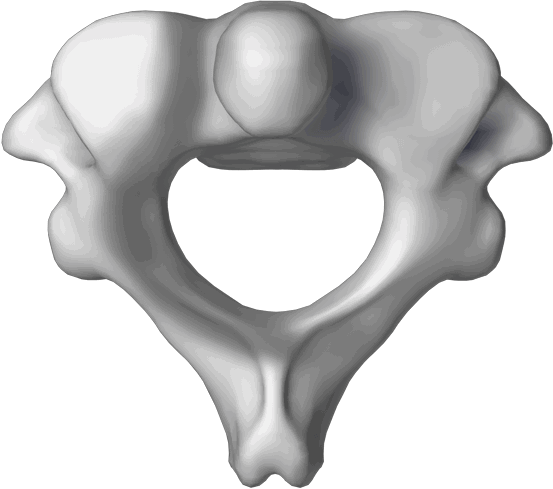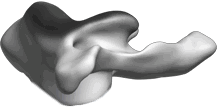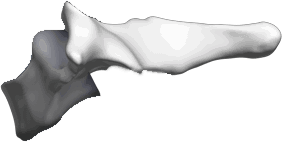A Complex Problem
What underlying problem are we ACTUALLY solving?
The Atlas Subluxation Complex (ASC). The ASC occurs when the top bone in the neck, the Atlas Vertebra (C1), misaligns from its normal position. This misalignment can restrict the brain’s ability to communicate with and heal the rest of the body.
The ASC is commonly caused by one or more past injuries. Some can definitively say they have had injuries, while others have experienced injuries unknowingly.
Injury buckles the head and neck in complex ways and stretches the ligaments and muscles needed to maintain normal alignment.
Common injuries include: whiplash injuries, car accidents, concussions, sports injuries, falls, and birth trauma.
95% of people have a misalignment by the time they reach adulthood.
If left untreated, it can lead to a wide range of symptoms and chronic pain, many of which are often misunderstood or overlooked by traditional doctors.
A Gentle, Natural Solution
National Upper Cervical Chiropractic Association (NUCCA) Chiropractors are trained to specifically correct and realign the ASC.
They can achieve this without twisting, popping, or thrusting into the neck, and most people do not feel the re-alignment.
A Lasting Difference
The upper neck is the most complex and challenging region of the spine to align, but when correction is achieved, the results can be simply amazing.
How Did I Get This Way?
As you can see, injury can also TWIST the Atlas and Axis (C1 & C2), adding to the complexity of the misalignment and compounding stress on the brainstem.
The Bigger Picture
The Atlas misalignment has a Full Body effect.
When the head and neck are injured, the entire body will compensate.
- Head & Neck Injury →
- Head & Neck Ligaments Stretch & Tear →
- Head & Neck Structural Misalignment →
- Head & Neck Instability & Weakness →
- Head & Neck Muscles Stretch & Tighten →
- Back & Hip Muscles Stretch & Tighten →
- Posture Imbalances & Lean →
- Scoliosis →
- Spinal Disc Bulging →
- Spinal & Brain Degeneration
Just as driving your car out of alignment causes premature tire wear, long-term atlas misalignment causes your brain and spine to age faster.
Look closely at your family and friends, and you may be able to tell if they should be referred in.
How Does This Affect My Overall Health?
The brain controls and regulates every function of the body, most of which we don’t feel or think about, such as emotions, heart rate, breathing, digestion, etc.
The Atlas misalignment compromises the brain’s ability to heal and send messages to the rest of the body, and can cause:
- Emotional dysregulation— The amygdala, our “emotional brain,” is closely related to the atlas vertebrae. When the atlas misaligns, this alters the function of the amygdala, causing changes in mood and anxiety. Additionally, it is common to see emotional changes upon the realignment of the atlas.
- Organ dysfunction — The vagus nerve sends signals to our most vital organs, such as the heart, lungs, stomach, and intestines. If the atlas misalignment stresses the vagus nerve, one may experience irregular heartbeats, palpitations, breathing trouble, asthma, indigestion, heartburn, and reflux. The vagus nerve begins in the brain.
- Immune dysfunction—The body responds to stress by activating the sympathetic “fight or flight” nervous system. The atlas misalignment triggers this system, causing excess cortisol and adrenaline, suppressing the immune system.
What To Expect Throughout Care
4 Phases of Recovery – Correct, Stabilize, Strengthen, Recovery
1) Correct – Next Appointment
A series of NUCCA re-alignments and post-x-ray imaging.
- We will correct your misalignment as far as your body allows.
- We want to relieve your pain and symptoms as quickly as possible.
Time: ~90 min
2) Stabilize ~ 3 months
Follow-up appointments (starting with 2x per week) to ensure your proper alignment stabilizes.
- We will be battling muscle memory throughout the first 3 months.
- We will monitor your alignment, re-aligning you as needed.
- Expect to meet 10-14 times throughout the next 3 months.
- As you begin to stabilize, we meet less often.
When you misalign again, it is essential to realign you ASAP. If you misalign again and wait to get re-aligned 5+ days later, progress will not be made.
Time: 10-30 min/visit
3) Strengthen ~ 9 months
Follow-up appointments (~2x per month) to ensure your proper alignment strengthens.
- We will be battling ligament instability throughout the next 9 months.
- We will continue to monitor your alignment, re-aligning you as needed.
- Expect to meet 10-14 times throughout the next 9 months.
- As you begin to strengthen, we meet less often.
Time: 10-30 min/visit
4) Recovery – 1 year +
- Recovery requires 1 month for every 1 year you have been misaligned—12:1 healing ratio.
- Spinal degeneration begins to reverse in this stage.
- We recommend getting checked quarterly, 4x per year, regardless of whether you are in pain.
- Recovery care is the best decision to ensure long-term brain and spinal health.
Time: 10-30 min/visit
FREQUENTLY ASKED QUESTIONS
“What should I expect after my first realignment?”
Day of your 1st re-alignment:
- Relax, and take the day off.
- Avoid quick head movements.
- Avoid lifting anything overhead.
- Avoid prolonged abnormal neck postures.
- Avoid chewing gum
- Go to bed early and sleep with the appropriate pillow.
Days 2-7 After your 1st re-alignment:
- No weightlifting, physical therapy, massage, acupuncture, hair cuts (head back in a bowl), or dental cleanings – your neck and spine will be restructuring.
“What should I expect during the first 3 months of care?”
After your first few re-alignments, you may notice different symptoms that “awaken and disappear” as the brain heals and the spine restructures.
This phenomenon is called retracing. This is normal, and any awakened symptoms should resolve within 3 days.
“How will I know this is working?”
Your posture and post-x-ray measurements improve immediately upon your first series of re-alignments.
You begin to maintain your correct alignment within 1 month.
You start feeling better within 1 month.
“Why do I need follow-up appointments?”
In a perfect world, we would re-align you once, and it would hold in place forever. Follow-ups ensure that we can realign you as soon as possible when you misalign again.
Aligned = Healing
Misaligned = Not healing
“Why 2x per week to start?”
It’s common for your neck muscles to pull you out of alignment within 3–4 days of your initial re-alignment. If you misalign again, it’s critical to re-align you as soon as possible. Your muscles need to be retrained.
With time, your correct alignment will hold in place longer, and we will meet less often.
“Will I get a realignment every visit?”
Our goal is to NOT re-align you during your follow-up.
This may take time, but we expect 80% of our patients to begin maintaining their correct alignment within the first month of care.
“I feel fine. Should I still come in for my appointment?”
Yes. We love it when you feel good!
However, just because the pain is gone does NOT mean the problem is gone, nor does it mean you are in alignment. Remember, pain is the first to improve and the last to show up. The less pain, the faster the healing.
The upper neck muscles and ligaments have been stretched and injured and need time to heal.
“How Can I Maintain My Alignment Longer?”
Relaxation Room (FREE)
- After a realignment, relax in our zero-gravity chair for at least 15 minutes before driving home.
Follow Dr. Burt’s Nutrition Tips (FREE)
- Limit sugar, bread, alcohol, seed oils, and eating out.
- This increases inflammation in your body, slowing your healing
Proper Neck Pillow
- Dr. Burt recommends the blue neckbone pillow for the car ride home (FREE) and Pillowise, a custom-fitted cervical pillow, for sleeping at night ($149)
Avini – Cell Defender ($79)
- Nano zeolites, “clinoptilolite,” have been clinically proven to naturally help remove heavy metals and other harmful toxins from the body. This process safely reduces the body’s pH, making it more alkaline. An alkaline body heals more efficiently than an acidic body.
Erchonia Low-Level Laser Therapy ($65)
- Reduce inflammation and improve your circulation and blood flow by recharging your mitochondria (cell’s energy source).
Please tell others about NUCCA Atlas care, thank you 🙂
NUCCA Atlas care makes good sense. Once you know the difference it makes in your life, please tell your family and friends how it has helped you, letting them know there is hope for their problems, and that suffering is optional.
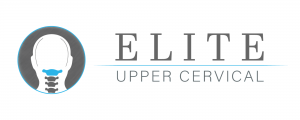
10200 SW Eastridge St. #235
Portland, OR 97225
